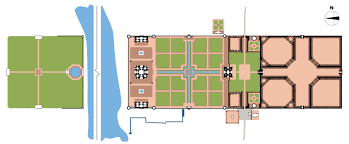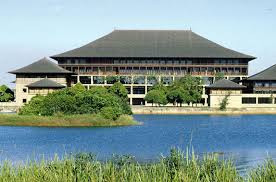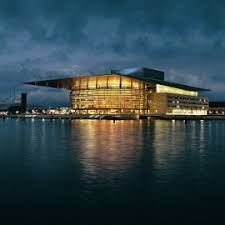
So you’ve seen the Taj Mahal
right? Now the trick is that you aren’t really supposed to merely see it. As
conceived originally, you are required to experience it in a manner where the
Taj is still definitely the central focus of the park in which it sits, but
nevertheless only one part of an entire ensemble. The idea was to pass through
the great gateway of the garden in which the Taj has been placed, and traverse
its fountain drenched gardens that gave you a glimpse of the gardens of
paradise. These gardens were unlike the staid British-Raj planted gardens that
sadly replace the Mughal gardens of yore.
These gardens of the Raj were planted to give
an obscene full frontal view of the Taj, whereas the original gardens laid a
play of light and shade, scent and sound, until finally, when bewildered and
enchanted by this garden, you came upon, almost suddenly at close quarters, the
great marble mausoleum, emphatic and ethereal, as if the very Throne of God.

The wonder of the Taj did not stop
with the mausoleum itself, for the design audaciously drew the river itself
into the arrangement of the great garden that was an integral design of the
Mahal. Situated on the other side of the river, the
Mahtab Bagh (translated literally, Moon Garden)
provided the final boundary of the entire ensemble. The Mahtab Bagh suggests to
us that the experiencing the whole arrangement was not intended merely by
daylight, but also by the moonlight, when seated in the Moon Garden (of white
flowers) one could view the white mausoleum by moonlight.

There was something of this
experience of the Taj that structured a recent visit to Copenhagen. Returning
from an excursion to the art galleries open later in the evening, thanks to the
Copenhagen Gallery Night, I came upon one of Copenhagen’s landmarks, the
Marmorkirken, or the Marble Church. Way past its visiting hours, the building
was quite expectedly shut, its classical façade shrouded in darkness, providing
only a silhouette. Perhaps it was for this reason of darkness, that my eye
turned toward the Frederiksgade, that sprung from the centre of the bottom most
steps of the church, leading the eye towards a huge crystal of light, the
Copenhagen Opera House, at the other end of this avenue.

Abandoning earlier plans I
stumbled down the Fredriksgade toward the Opera House. It was after all a
fascinating sight, providing at that moment, echoes of the Sri Lankan
Parliament designed by
Geoffrey Bawa. This track proved to quite literally be a
journey toward the light, for in the process of reaching the Opera House I had
to cross the circular
Amalienborg Slotsplads. The square of the Amalienborg
Palace, the antique lamps on the square eschewed the commonplace florescent
lamps that shine into the sky. On the contrary, placed in the head of the lamp
post, they shone done, casting a soft yellow light around the base of the posts,
creating a middle-space between the darkness of the Church and the light of the
Opera House.

That moment in the Amalienborg
Slotsplads was a very private moment, for unlike its day time persona, when it
is flooded with noisy, image-hungry tourists, the space by night was deserted, marked
only the presence of a couple of soldiers marching on guard watch, and an oddly
indisciplined plastic bag, thumbing its nose at Scandinavian regimes of public
order. That private moment in the chiaroscuro allowed for a languid
contemplation of the darkness of the Marmorkirken the light-filled crystal cube
of the Opera House. A return to the same space in the day-time revealed a
completely different space, underscoring how special that nocturnal visit had
been. What this latter visit revealed however, was a little sculptural map set in
a wall, indicating that this ensemble of Chuch, avenue, palace and square had
been planned by the original architect of the project, and indeed the later Opera House aligned to add to the older vista.

As it turned out however, my
intended progress to
Opera House was blocked by the waters of a canal that
stood between the palace and the Opera House. What I did realize however, was
that, having traversed this 18
th century ensemble of built form I
was gazing at the Opera House from within a waterside garden. The intended
journey may have been incomplete, and the location Scandinavia, but in that
frustrated journey, there was a sense of a wholesome experience that the
designers of the Taj intended.

No comments:
Post a Comment